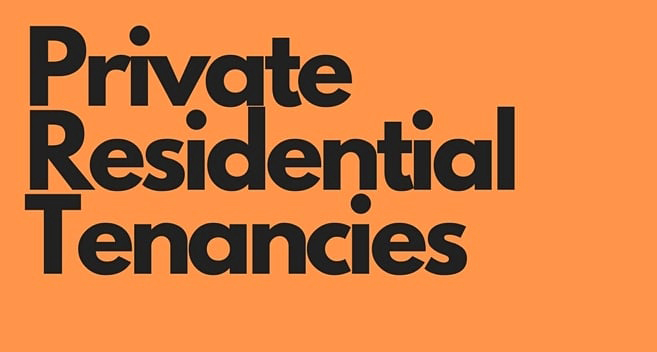Why you need property as part of a diversified portfolio
“The most powerful tool an investor has working for him or her is diversification. True diversification allows you to build portfolios with higher returns for the same risk. Most investors…are far less diversified than they should be.”
The above quote is by Jack Meyer who managed Harvard University’s endowment from 1990 to 2005. During his tenure he grew the endowment from $4.8 to $25.9 billion.
Residential property has outperformed most other asset classes over the last 20 years and continues to offer the well-informed investor opportunities for significant returns. In this blog I want to investigate why real estate should be part of any investors portfolio.
But before we look at utilising property as a means of portfolio diversification I think we should first investigate a couple of aspects of investing in general so we can gain a greater understanding of the terms used by asset managers.
The first is asset allocation:
Asset allocation is an investment strategy that aims to balance risk and reward by apportioning a portfolio's assets according to an individual's goals, risk tolerance and the length of time of the investment (known as the investment horizon). Asset allocation will vary from person to person and is a complex question and there is no simple formula that can find the right asset allocation for every individual. But it needs to be covered and is a critical aspect of building any investment portfolio.
The next thing to investigate is diversification itself.
Diversification is a risk management technique that mixes a wide variety of investments within a portfolio. The rationale behind this technique contends that a portfolio constructed of different kinds of investments will, on average, yield higher returns and pose a lower risk than any individual investment found within the portfolio. Diversification strives to smooth out unsystematic risk events in a portfolio so the positive performance of some investments neutralizes the negative performance of others.
I strongly believe in spreading risk, a non-diversified portfolio will expose individuals to unnecessary non-systematic risk which is easily mitigated by simple portfolio diversification. But to do this the investor needs to focus not only on the individual asset's risk/return characteristics but also importantly on how that asset interacts with other portfolio positions. I think any serious investor should look at risk verses return in a holistic way. It is not enough to look at the characteristics of a potential investment on its own but instead one must be aware on how an investment impacts the risk return profile of the overall portfolio.
So, let’s now look at the benefits of diversifying using property.
Real estate fits well as part of a diversified portfolio because it has a number of qualities that can enhance the return of a portfolio, or reduce risk at the same level of return the main qualities are:
- Property returns have relatively low correlations with other asset classes (traditional investment vehicles such as stocks and bonds), which adds to the diversification of your portfolio.
- Yield enhancement; as part of a portfolio, real estate allows you to achieve higher returns for a given level of portfolio risk. Similarly, by adding real estate to a portfolio you could maintain your portfolio returns while decreasing risk.
- Inflation hedge; real estate returns are directly linked to the rents that are received from tenants. Some leases contain provisions for rent increases to be indexed to inflation. In other cases, rental rates are increased whenever a lease term expires and the tenant is renewed. Either way, rental income does tend to increase faster in inflationary environments, allowing an investor to maintain its real returns.
- Ability to be able to enhance performance. Property is a tangible asset hence; an investor can do things to a property to increase its value or improve its performance. Examples of such activities include: adding value by developing and improving the asset, re-tenanting the property with higher quality tenants and reducing void times through proactive management. The result is an investor has a greater degree of control over the performance of a real estate investment than other types of investments.
- Stable income generation; the income generated through rent can be both passive or active depending on the investor but most people investing in property expect to generate a passive income by using a property management company to look after the day to day running of the asset.
Property is now recognised as an important component in a person's overall wealth and the effect and contribution of property as an asset class in its own right to the overall portfolio is being recognised.
So, in summary the primary benefits of residential property are: attractive risk adjusted total returns, stable residual income, hedge against inflation and diversification resulting in risk reduction against volatility.
Property offers canny investors fantastic rewards but as with any investment there is risk. The route to investing into the residential property market has become increasingly more complex with ever increasing levels of regulation, changes to taxation, legal framework changes. This has led to rising costs and increasing levels of risk. The result is that there is now a significant need for investors to seek out professional asset management companies that fully understand these complexities and who can put strategies in place to mitigate risk and work towards purchasing a solid investment that offers the best potential for yield and strong returns.
The opportunity for individuals to make mistakes, and in the worst cases bad investments that might end up with someone losing money are greater than ever before. I am continually surprised by the number of individuals who see no benefit in seeking the best advice possible and in fact only see the negatives and make decisions based on initial cost rather than long term gain.
The secret to coming out on top is to focus on approaching the process of property investing in a new way - a holistic way. Investors need to learn that a more rigorous approach to each property purchase is necessary if they want to reap the large rewards that property can offer.
As a forward-thinking asset management company and experts in the field of residential property investment we at Glenham embrace this view and through our network of trusted partners offer a 360° approach to investing in property. This means we work closely with our clients to build a planned and calculated investment strategy which is focused on maximising their returns and mitigating risk.
Please do get in contact to have an informal chat about the Scottish market and the opportunities therein. We provide comprehensive property investment services and we can assist in renting out a sourced property.
Minimum EPC for Rental Property
There has been a large amount of press recently about minimum EPC (Energy Performance Certificate) ratings for rented property. At the moment this legislation does not apply to Scotland, only to England and Wales. The Scottish Government consulted on plans to introduce similar requirement in 2017 and have published an analysis of the responses here
https://www.gov.scot/Publications/2017/11/6863
The Scottish Executive have designated energy efficiency as a National Infrastructure Priority with Scotland’s Energy Efficiency Programme (SEEP) being a significant part of this. There will be changes made to the repairing standard with the aim to ensure homes in the PRS meet minimum efficiency standards to bring it closer to those required in social rented housing in summary these are expected to be:
- The standard will be based on the energy rating on the EPC. The standard will be an EPC band E initially and will be raised to a band D overtime with a potential to raise it further.
- The initially standard will apply to properties where there is a change in tenancy after 1st April 2019. Where and EPC shows a bad F or lower the owner will need to have a minimum standards assessment carried out and lodged on the EPC register before renting out the property and an owner will have six months from the date of the assessment in which to carry out the works.
- All properties covered by the repairing standard would need to meet the minimum standard by 31st March 2022
- All properties covered by the repairing standard would meet the higher threshold at a change in tenancy after 1st April 2022
- The owner of the property will be responsible for getting the improvements required by the minimum assessment carried out.
- Local authorities have the power to issue civil fines of up to £1500 against any owner who does not comply.
- There will be some situations where an owner is not required to do all the improvements identified in the assessment or will have a longer time to do so. There will be a cost cap of £5000.
Ministers will develop draft regulations for further consultation and changes will be brought in through secondary legislation through the Scottish Parliament. The latest update is draft legislation will be put in front of Parliament early in the new year and the expectation is the new regulations will come into force as detailed in the consultation ie 1st April 2019. But until we have seen the actual detail it is difficult for us to comment fully.
It should also be noted that properties would only need to be brought up to the minimum standard where it is technically feasible and cost effective. As mentioned above the current proposed spending cap is £5000 but there is lobbying to reduce this similar to the cap in England and Wales which is £2500.
Any landlords with and EPC rating of F or below will need to prepare to have an assessment carried out and will where feasible will need to have work done to improve the rating of their property to bring it up to the required standard.
Need help renting out your property? Get in touch today to see how we can help via our comprehensive property management service.
The Private Residential Tenancy
The Private Residential Tenancy has been with us now for over 8 months and as a result I thought it might be worthwhile taking some time to see what impacts, if any, there have been.
I have looked at the major changes in the PRT here.
In summary the main points are:
- There is no minimum term.
- There are no pre-tenancy notices.
- Tenancies can continue indefinitely unless either the tenant wants to leave or the landlord decides to utilise one of the 18 grounds for repossession detailed in the act some of which are mandatory and some of which are discretionary.
- The “no fault” ground for repossession has been removed.
- If a tenant refuses to leave the property after being given notice by the landlord, the landlord will have to seek repossession through the First Tier Tribunal (FTT).
- The period of notice that a landlord is required to give to a tenant to terminate a PRT is 28 days (where the tenant has been entitled to occupy the property for not more than six months), or 84 days (where the tenant has been entitled to occupy the property for more than six months).
- Rents can be reviewed only once in a twelve-month period with a landlord required to give the tenant at least three months’ notice of the increased rent.
- Local authorities can apply to the executive to designate areas as rent pressure zones (RPZ’s). These will regulate rent on existing tenancies but not new tenancies. If a council is successful a RPZ can last for up to five years and landlords in the areas affected will be able to raise rents by at least CPI+1% every twelve months.
One of the issues the industry had with the PRT was that without a fixed term there was a greater potential that tenants might terminate their tenancies within 6 months. Since its inception have we seen a significant rise in the number of tenancies being terminated by the tenant within a six-month period? In short, the answer is no. The level of demand for good quality rental accommodation is significant and growing with most tenants finding it hard work to secure a property and will hence choose to stay put once they are settled.
The shortage of stock is being further exacerbated by recent findings from the National Landlords Association (NLA) that show that almost a quarter (24%) of landlords with property in Scotland have sold over the last three months, with just 5% having bought in the same period. The data relates to property transactions between April-June this year, four months after the Scottish Private Residential Tenancy was introduced in December 2017. This added to the continued rise in the short term let market is reducing stock levels further and increasing competition among those looking to secure a place to live. The result is there is significant opportunity for those landlords remaining in the market and for investors looking to purchase and the impact on Landlords of the removal of the fixed term has been negligible.
It is worth noting that without a fixed term a landlord also has no restriction on when they can serve notice using one of the grounds noted within the act. The result is those landlords who are choosing to exit the market and sell can do so at any point as long as the correct notice is given and this certainly has been happening. Thus, the Scottish Executives stated aim of creating a greater level of security of tenure for tenants has been left wanting.
I would also point out that a landlord does have the ability to end a tenancy using one of the 18 grounds for repossession listed in the act and the process for seeking repossession has been streamlined to make it easier for all parties. We feel the grounds for repossession are robust enough, though it is still too earlier to really comment on how the system and the FTT are working.
The removal of the section 33 notice or no-fault ground has also been highlighted as an area of major concern especially for HMO student style properties but again, we feel that this has been overstated. As an agency we understand it is critical that student properties are marketed at the correct time to ensure re-letting. To ensure this we write to all our student lets early in the year and will know very quickly how many properties will require remarketing. Demand for HMO’s is, if anything, higher than standard properties in a recent survey for Spare Room it was found that there are 22 individuals chasing every room in Edinburgh. With proactive management and communication with our tenants we are comfortable that we will continue to be able to minimise void times and ensure HMOs come onto market at the correct time to link with the academic year
The area where the concerns specific to HMO's maybe be valid is for those landlords who choose to rent out their HMO properties for the festival. It will be difficult for a landlord to be able to know with any certainty when they are able to gain vacant possession since they cannot any longer end a tenancy on a given day using the “no fault” ground. As a result, there is a risk that the availability of accommodation for the festival will be reduced. It is our view that again with a proactive and coordinated approach to management and good communication we will be able to overcome these difficulties by seeking agreement form tenants on leaving dates early on. This should enable landlords to rent the property during the festival, though we will have to wait and see in 2019 before making a final judgement.
So in summary we are of the opinion that the new PRT shouldn’t overly concern landlords. With professional, proactive and coordinated management any of the risks can be mitigated. And with the continued rise of the Private Residential Sector demand levels for good quality accommodation look set to continue. Property continues to offer a strong return for investors and exiting the market is short sighted.
As a premier Edinburgh letting agent, we offer a fantastic property management service which has everything you need to let out your property. Get in touch today to discuss.
Is Rent to Rent a Good Idea for Landlords
This month I would like to examine a business model that has appeared in the residential property market over the last few years with various property ‘Gurus’ offering books, seminars and courses boasting how anyone can turbo charge their income without so much as even owning a property. Known as Rent to Rent (R2R) or multi-let this is where an individual or company rents a property from a landlord and is meant to pay a fixed and guaranteed rent to the landlord while they sublet the property to tenants normally on a room by room basis.
These types of agreements can be attractive to an owner who wants a “hands off” approach or who may be tired of all the regulations and legislation around letting property. As mentioned the Landlord receives a fixed reliable rent for an extended period, and doesn’t have to deal with finding tenants, managing agents and the like. Furthermore, the rent-to-renter can also deal maintenance issues and ensuring the regulatory requirements are met.
There are organisations offering legal and professional ways for landlords to benefit from R2R but I am of the opinion that it can pose a significant risk to landlords.
The first thing to say is the model seems to primarily be focused on greed and relies on maximising the rental income for the rent 2 renter by cramming the most people you can into a property and charging them the highest rent possible.
I personally believe there is a question of ethics here, as the primary motivation of the middleman in most of cases will be to generate the largest possible income, while looking after the asset itself and the tenants is very much a secondary concern. In fact, there is an argument that this type of model attracts some of the most vulnerable tenants, those who for whatever reason have been unable to find a place to live through normal means. The result is they are driven to adverts for rooms available in overcrowded properties sharing with complete strangers while paying higher than average rents.
Let’s now look at the risks for the property owner. The first is what sort of agreement does the landlord have with the R2R party? A Short-Assured Tenancy or Private Residential Tenancy does not allow for any form of subletting.
In an illegal rent-to-rent, middlemen pose as normal tenants and sign a Private Residential Tenancy but instead of moving in themselves they let the rooms out individually. They may pass the agreed rent to the landlord but often this is not the case and meanwhile, the tenants occupying properties have no legal right to live there.
There are other forms of agreement: Commercial leases, ‘agency agreements’ and specific rent to rent tenancy agreements. Terms of such agreements will vary considerably some may offer a full repairing lease while others are silent on such issues, some are silent on subletting while others can provide for the R2R tenant to give ‘licenses’ to occupiers and finally some do actually allow for sub-letting for tenants.
The terms of any agreement are crucial and while there are indeed legal ways for landlords to allow for R2R the evidence is that landlords are signing up to anything usually drafted by the R2R party. I won’t go into specific detail on why the types of agreement mentioned above don’t work but suffice it to say that most of these are really not worth the paper they are written on.
It is also worth mentioning that any R2R that is set up telling property owners and ‘tenants’ that it gives them licenses is legally illiterate and just plain wrong. Unlawful eviction claims await.
The next worry I would have is the possible creation of an illegal HMO, as we have already seen the R2R model is based on getting as many people into a property as possible. This is often achieved by using all the rooms in the property that can be as bedrooms, so a two-bed flat with a living room would be let as a three-bed property, possibly with two or more people sharing a room and thus creating an HMO and leaving the landlord at risk of incurring a fine. There are also instances where a large room has been subdivided to fit yet more people in generating further income for the Rent to Renter.
The landlord loses all control over who is living in the property, and again this poses a risk. Professional agents will carry out back ground checks on their tenants before a lease is signed and will always seek to ensure that anyone moving into a property is going to be a responsible tenant and look after the property.
In addition, if a landlord were to hand over all the regulatory and maintenance requirements to the Rent to Renter and again there is a risk that these will not be their primary concern and put the landlord at risk of fines and at worst criminal proceedings.
Finally, a R2R could also invalidate Landlord insurance and be in breach of buy-to-let mortgage terms.
As a professional asset management company, we at Glenham are focused on maximising our clients returns while at the same time always seeking to mitigate their risk. We ensure that all our clients legal and regulatory responsibilities are met and that the properties we manage on their behalf are well maintained and in good order. In addition, we also have a duty of care to our tenants and make sure all legal documents they sign are fully compliant. This type of scheme would not be something that we as an agency would even consider as the risks are just too high.
Any DIY landlord should also weigh up the pros and cons before deciding, I would say the risks far outweigh and possible benefits and any landlord should steer clear.
We offer a property management service as well as various property investment services. Contact us today for more information.
The Bank of Mum and Dad
At Glenham we are seeing an increase in the number of clients looking to invest into a second home for their children especially while they attend further education. We have successfully helped a number of families purchase properties that work both as an investment but also as a place for their children to call home over the period they study.
Interestingly some recent statistics have shown that the bank of Mum and Dad now funds more than a quarter of all home purchases in the UK. There a number of ways of parents are helping their children get onto the property ladder some examples are; gifting cash for a deposit, buying outright or lending money for a joint purchase there are others but these tend to be the most popular.
The most common way of parents helping out is by giving their child some, or all, of the required deposit to qualify for a mortgage. Lloyds bank recently said the average loan a first-time buyer received from family is almost £24,000. The result of this is the bank of Mum and Dad now funds approx. 25% of all mortgage transactions a year according to Legal and general.
As we have discussed many parents choose to help their children while they attend further education and for those people fortunate enough to be able to afford to buy a second property there are a number of benefits. By purchasing a property for their children to live in while they study could mean that they won’t have to pay living costs as these can be covered by rental income. In addition, the possible increase in capital value could cover the cost of tuition fees and even show a return after these costs have been taken into account.
It is also worth noting that most student HMO properties are currently let over the summer recess and hence parents are having to fund their children’s accommodation while their offspring are away from their studies.
Of the above does rather beg the question if you can afford to why not buy a property for your children while they study?
Another important reason for the Bank of Mum and Dad to help with a property purchase is that it could be a way to give your kids a debt-free start in life and get them onto the property ladder at a much earlier age than the national average.
As I have already mentioned above there are many ways a parent can approach the purchase but there are also number of things to consider before even starting to search. We would always suggest the family first seek professional advice around taxation, finance and inheritance which will enable them to work out the best option that suits their individual needs.
Once all the details and the best option for purchase have been agreed then the search can start. But with this type property purchase there are still many things to consider. Buying a property in which a child is going to live is not the same as a straight investment purchase but would certainly advise it is factored into the search criteria.
For our clients who have bought somewhere for their kids to live while they study the primary considerations tend to be the amenity and comfort of the property and its location. But once these considerations have been met then it is always worthwhile looking at the possible return that the property could offer as an investment and choosing something that stacks up.
Once a property has been bought there are further things to consider not least the increasing levels of regulation and legislation around renting property. Glenham can help with the ongoing management of the property once purchased. In short, we seek to offer parents comfort that all regulatory and legislative requirements are met, we can deal with rent collection and the ongoing maintenance of the property during the term of ownership.
Lastly many of our clients who have helped their children purchase properties during their studies have chosen to keep the properties as a long-term investment and see them as a means to diversify their asset base.
At Glenham we are a premier Edinburgh letting agent offering a comprehensive property management service as well as various property investment services to suit your needs. Get in touch today for an informal chat.
Regional Cities Offer Investment Opportunity
There are so many differing factors affecting UK property that it is sometimes difficult to keep track. However, there is now an increasing consensus across market commentators that some of these will put the brakes on house price growth over the next ten or so years. At first glance this might put some investors off, however, we believe that a moderation in house price inflation is not a bad thing and perhaps should be welcomed as it will lay the foundations for a less volatile market in the medium term.
Looking at the wider UK market the key drivers of lower growth are mainly political and economic. The ongoing questions around Brexit is causing some uncertainty and the UK economy is clearly going to react to what the final outcome will be. Added to this UK population growth looks set to slow down along with net inward migration but actual overall growth figures for the next 10 years still look fairly strong.
Economic Growth to Remain Steady
Taking both Brexit and population into consideration UK economic growth in the medium term is forecasted to remain steady if unspectacular. In 2018 and 2019 Gross Value Added (GVA) is a moderate 1.6% and 1.7% PA but this is expected to improve to 2.1%-2.2% in 2020 and 2022 respectively. One area that looks set to remain subdued is earnings growth, this will of course have an impact on affordability especially when inflation is taken into consideration which is currently running above the government target of 2% PA. Though this is forecast to moderate and drop below this over the next five years. Interest rates also look set to rise further, although The Bank of England Monetary Policy Committee did recently state that Bank Base rate is unlikely to rise more than a further two times in the coming couple of years though this could of course change!
In Scotland the UK’s membership of the EU and Scottish Independence remain key issues. The Scottish economy is expected to slightly underperform the wider UK economy over the next five years with GVA predicted to increase by 1.5% in 2018 and to expand by an average rate of 1.7% PA during 2018-2022 period slightly below the UK figure of 2.0% PA.
Regional Cities Likely to Outperform National Median
In Scotland as a whole JLL are suggesting an uplift in prices of 10% over the next 5 years which does reflect a slowdown from recent inflation figures of 15% over the past five years. However, this projected slowdown will be patchy and area specific with main regional city centres likely to outperform the national median. The result is that there will be opportunities for well informed and advised investors to buy assets that will outperform national growth levels and allow them to continue to benefit from strong returns.
Edinburgh is one city where this differential is likely to be significant with strong growth forecast as continued increasing population and limited development result in continued a differential between supply and demand. JLL’s new build apartment pricing indices suggest that prices in the capital rose by 40% during the last five years. The average sales price of a typical new build two bedroom in the city centre is circa £278,000 this represents an increase of 5.3% during 2017. Over the next five years we expect Edinburgh city centre sales prices to rise by an average 4.1% PA one of the highest city growth forecasts in the UK.
Regional Cities to Dominate - Room for 30% Rise in Prices
Further evidence of the strength of regional cities is shown by the Hometrack UK cities price index. In the 12 months to January the index showed that UK city house price inflation was running at 5% up from 4% a year ago with Edinburgh leading this growth at 7.7%. The report goes onto suggest that regional cities will continue to dominate with room for a up to a 30% rise in prices over the next four years.
New Build Development Not Keeping Pace
Edinburgh has one of the highest projected population increases of +17% to 2039, which compares to the Scotland average of 7.5% growth. Long-term household growth in Edinburgh is 47% compared to Scotland’s overall growth of 31% (NRS, 2014). In numbers the population in Edinburgh has increased by 24,540 over the last five years and broke 500,000 for the first time in 2016. This expansion is forecast to continue at a rate of more than 5,000 per annum over the next 20 years. However new build development has not kept pace with population and household growth, delivering on average 1,080 new homes per year (2008- 2017 Q1). Whilst there has been a recent pick up reaching 1,832 units in the year to March 2017, this is not enough to mitigate historic undersupply (source Savills).
Edinburgh’s economy is expected to perform stronger than the national average with GVA figures of 2.2% forecasted and in addition employment levels are also set to rise. The result is demand for good quality rental property remains high and looks set to continue.
Thus, the outlook for the capital remains robust and there is no sign of current levels of price inflation falling back anytime soon.
Looking to source a rental property? Contact us today to discuss our comprehensive property investment services.
Glenham's investment advice appears in The Scotsman
Glenham's Investment Manager Charlie Inness wrote a column for The Scotsman on the huge potential offered by the property market in Edinburgh 2018, which was published on 25th January. Below is the text from the printed article.
WHY YOU SHOULD CARE WHAT THE PROPERTY MARKET IS DOING IN EDINBURGH IN 2018
With 400,000 properties for rent in the market across Scotland, the last year has seen a few milestones happen within the property market in Edinburgh:
- It is the first time that the average rent has tipped over £1,000 per month in the capital.
The sales market is consistently outperforming London. - The population of Edinburgh is growing by 5,000 people per year but house building is not keeping pace.
- The University of Edinburgh says the city retains a huge 42 per cent of students after they have finished their degree, which means particularly the number of young professionals is growing rapidly.
- The effects of mortgage interest relief being phased out by 2020 are starting to be felt and fewer people want to remain as landlords.
- And new Private Residential Tenancy came into effect on 1st December.
This year promises changes and there are some key developments that we expect to see in the property market.
Firstly, there will be fewer letting agents. A new framework will be introduced in 2018 within the Housing (Scotland) Act 2014 where all letting agents will need to be registered and follow regulations, enforced with inspections.
Currently many letting agencies voluntarily abide by a code of practice. The larger and professional agencies will register, but the smaller agencies may decide that they do not want to follow regulations, or that it is not financially worth it, resulting in a small number of letting agents deciding to either amalgamate or sell.
Secondly, there may be even fewer properties on the market to rent and more properties to buy.
The reduction in mortgage relief and taxation are beginning to be felt. This will impact on landlords’ profits certainly on those who have potentially invested unwisely.
Some – potentially many - landlords will realise that due to the new tax rules, they will be making a loss on their rental property and decide to sell. This will put more stock on the market for purchase.
We predict that this will result in continued increasing rents. Fewer letting agents, fewer landlords and fewer properties will mean that prices will keep on rising. RPZ (Rent Pressure Zones) are highly likely to be introduced into Edinburgh next year but this will only come into effect for new contracts. In addition, it won’t stop prices going up, it will just stop them being increased by more than a certain percentage.
We also expect short term lets to continue to impact the market. Edinburgh is a hotbed of these as people realise huge returns on seasonal peaks such as the Fringe, Edinburgh’s Christmas and Hogmanay. This means that landlords may choose to short term let rather than long term let, reducing the available housing stock for rent or to buy for people who want to live and work here.
You can’t go wrong anywhere in Edinburgh, but the top three tips for places to buy in Edinburgh this year will be Dalry and Gorgie area due to the new Haymarket development, the Abbeyhill or Meadowbank area, and Newhaven.
We have seen huge leaps in those three areas and due to environmental factors this will only force prices up over the next 12-36 months.
Whether you are a tenant, landlord or investor in Edinburgh, you will be affected by the tremors within the property market in 2018 and everyone will need to be smarter about their role within it.
Property investment doesn't have to complicated. Contact us today for an informal chat where we'll take you through our property investment services.
The Residential Property Investment Market in Scotland – what’s in store for 2018?
During 2017 we saw a number of significant changes that impacted on the residential investment market in Scotland from changes to mortgage tax relief to the end of the Short Assured Tenancy as the new Private Residential Tenancy was introduced. The result is the hurdles to investing and benefitting from strong returns in property got much higher and thus the opportunity for investors to make mistakes grew considerably.
As a result, I am sure that most of us hope that 2018 will be a year with less tinkering by government to allow investors to draw breath and take stock. So, let’s take a look at what might be in store in 2018.
There may be fewer properties on the market to rent
The reduction in mortgage relief and taxation are beginning to be felt and this is likely to have an impact on some landlords' profits especially on those who have potentially invested unwisely. As a professional asset management company, we are always seeking ways to help our clients continue to maximise returns which is why we offer a 360º review service to help investors ensure their investments are working as effectively as possible.
Rents will continue to increase
With more people choosing to live in the Private Rented Sector demand for good quality rental stock looks set to remain high. Added to this there is a lack of supply which is being exacerbated by a huge increase in short term lets resulting in increased competition for available stock hence lower void times and continued upward pressure on rents. The population in the capital is forecast to increase at a rate of 5,000 people per annum and rents topped £1,000 per month for the first time last year. The result is that RPZ (Rent Pressure Zones) are highly likely to be introduced. I don’t want to go into a lot of detail on RPZs as I have written at length on the subject in another blog but if anyone would like to discuss the potential impact they will have do please get in touch.
House price inflation will continue but at a slower rate
Data from the Royal Institution of Chartered Surveyors shows a reduction of new stock coming onto the market. The result is a significant undersupply in the market whilst demand levels remain robust which will continue to fuel house price inflation. This is especially true in Edinburgh with transactions in the city falling by 3% which is the first annual drop in six years. According to Hometrack, Edinburgh recorded the fastest house price growth in the UK this September with annual uplift figures of 6.7%. Hence capital values should continue to rise though our feeling is that we will see a cooling off in the market in 2018 as the combined headwinds of economic and political uncertainty begin to take effect. We expect house price inflation to slow to somewhere between 2% and 3% per annum.
More overseas landlords will invest
For any investor the UK’s property market boasts an incredible amount of potential. Between January 2002 and January 2017, house prices in the UK rose by 147% (source: Rightmove). Furthermore, over the last 20 years, UK property prices have grown by 14.34% p.a. on average. The FTSE All Share index delivered 3.46% p.a. on average over the same time period.
Recent research by Liquid Expat Mortgages has shown that foreign nationals and ex pats are being attracted to the market due to the weakness of the Pound. For example, there has been a 20% increase in foreign nationals and expats within the UAE investing in UK property year on year. These investors are increasingly looking at areas outside London to invest as capital deployment levels are significantly lower and yields are much higher.
Landlords will need to be smarter than ever before
With the increasing levels of regulation, changes to the legal framework and higher taxation DIY landlords face many pitfalls that could end in loss of income, prosecution and, in the worst case, criminal charges. At Glenham we take on that burden and fulfil the majority of a landlord's obligations on his or her behalf. We are primarily an asset management company and, as such, our role is to seek to mitigate our clients risk while at the same time looking to maximise their returns. We do this by being immersed in the market and always looking to find ways of reacting to changes in the market place to help our investors continue to benefit from strong returns.
We can help you source a property via our property investment service. Additionally, we'll help you let it out quickly and efficiently. Get in touch today.
Overseas Investors: why Scotland is an attractive place to buy
Foreign Investors are benefiting from a reduction in the value of Sterling. Recent research has shown that Ex Pats and foreign nationals are cashing in and buying properties while the pound is weak. Liquid expat mortgages have seen a 20% year on year increase in expat and foreign nationals investing in property in the UK. Interestingly, they are not buying in London as the capital is no longer viewed as the safe bet it was furthermore, high capital values and low yields are putting investors off.
For any investor the UK’s property market boasts an incredible amount of potential. Between January 2002 and January 2017, house prices in the UK rose by 147% (Source Rightmove). Furthermore, over the last 20 years, UK property prices have grown by 14.34% p.a. on average. The FTSE All Share index delivered 3.46% p.a. on average over the same time period.
More and more overseas investors are looking for deals further north and Scotland is seen as an attractive place to buy as demand for rental property is high and looks set to stay that way. Recent research undertaken by GVA and PRSim found that 71% of Scots are happy living in rental accommodation and 82% of people who rent say it best suits their lifestyle. Young people are actively seeking to live in the PRS as a lifestyle choice which is contrary to the headlines about Generation Rent and renting being a necessary evil. There has been an increase in the proportion of 16 to34 year olds privately renting from 16% in 1999 to 40% in 2016. The sharp rise has been attributed to the difficulty in getting on the housing ladder, the stifling of real wage growth since the financial crash and the changing lifestyles of young people in Scotland.
Edinburgh is becoming increasingly popular with foreign national and expat investors for many reasons. The city is the UK’s largest financial centre outside of London both by gross value added (£4.201 billion in 2014) and employment (34,800 in 2015). The sector is extremely diverse with strong representation from banking, insurance and pensions, fund management and asset servicing with more than 90% of all Scottish fund managers based in the city region.
The population in Edinburgh has increased by 24,540 over the last five years and broke 500,000 for the first time in 2016. This expansion is forecast to continue at a rate of more than 5,000 people per annum over the next 20 years. However, new build development has not kept pace with the increase in population with just 1,832 units coming to market in the year up to March 2017. As a consequence of this, demand for good quality rental stock will remain high resulting in low void times and strong yield levels.
According to Hometrack, Edinburgh recorded the fastest house price growth in the UK this September with annual uplift figures of 6.7%. We expect prices to continue to grow and some commentators are forecasting an increase of as much as 23% in capital values over the next five years. However, it is our belief that this level of uplift is somewhat optimistic, and we would expect levels nearer 3% year on year. The result is the outlook for continued high returns for investors remains strong.
But with the increasing levels of regulation, changes to the legal framework and increases in taxation it is critical that any investor seeks professional advice. This is especially true for those from overseas who may not understand all the responsibilities of being a landlord and the pitfalls that stand in the way of securing a property which offers the best possible opportunity for a strong return. As an asset management company our focus is on securing assets that offer strong returns while at the same time seeking to mitigate our clients’ risk. We have helped many overseas investors purchase properties in Edinburgh that have performed extremely well and we are seeing double digit returns.
I would now like to look at the key areas that any overseas investor must consider before they invest and how we can help.
Tax
It is very important that any purchase is structured correctly to mitigate the tax burden, as such we have a number of partner accountancy firms with whom we have worked closely over many years all of whom specialise in property taxation. It is also worth noting that any overseas landlord must register with HMRC via the non-resident landlord scheme.
Finance
For foreign nationals it is very difficult to raise finance in the UK and often investors will buy in cash. We do, however, work closely with a number of finance companies who might be able to offer leverage.
Source a solid and safe investment
It is important that you get the right advice from the outset. We will speak with you to build a picture of your investment criteria then put together a search to find the best opportunities for you. We will also carry out high levels of Due Diligence and analysis on the property to ensure the asset will make a good investment.
Legals
We work closely with a range of solicitors and will liaise quickly, efficiently and pragmatically with them during the conveyancing process. Buying a property is not meant to be a complicated exercise.
Insurance
The property will need to be insured from the point of purchase and again we can help organise this through one of our partner firms.
Management
Glenham, a premier Edinburgh letting agent, will manage the asset and seek to maximise returns while at the same time ensuring all legal and regulatory requirements are met. We will vet tenants, deal with maintenance issues as they arise, collect the rent and pay over income to you our client via our property management service.
Glenham Property is dedicated to managing Scottish residential property on behalf of its diverse client base. We act for a number of overseas investors from all parts of the world and consistently provide our clients with high levels of service and strong returns from their assets.
Get in touch today to discuss your property investment needs.
Opinion: The Private Housing (Tenancies) (Scotland) Act 2016
There has been a lot of negativity in the press about the new Private Housing (Tenancies) (Scotland) Act 2016, primarily focused on the removal of the “no fault ground” and the end of the fixed term. Our feeling is that the new PRT isn’t as frightening as perhaps some people might have us believe for the reasons we list below.
The level of demand for good quality rental stock is significant and growing with the result being that tenants will often choose to stay in a property for longer than the current six months minimum term. In fact, the average length of tenancy in the east of Scotland currently stands at approximately 20 months and in the majority of cases it is the tenant who terminates the lease and not the landlord.
The structure of the Private Rented Sector is changing with tenants now actively choosing to live in the sector. In a recent survey carried out by GVA and PRSim it was found that 71% of Scots are actually content living in rented accommodation. Added to this, 82% of people believe that renting best suits their lifestyle. This is contrary to the common belief that renting is a necessary evil whilst saving for a home and to the headlines about Generation Rent and the PRS being a tenure of last resort.
It should also be pointed out that a landlord does have the ability to end tenancies using one of the 18 grounds for repossession listed in the act and the process for seeking repossession has been streamlined to make it easier for all parties.
Houses in Multiple Occupation
The removal of the section 33 notice or no-fault ground has also been highlighted as an area of major concern especially for HMO student style properties but again, we feel that this has been overstated. As an agency we understand it is critical that student HMO properties are marketed at the correct time to ensure re-letting. To ensure this we write to all our student lets early in the year and will know very quickly how many properties will require remarketing. Demand for HMOs is, if anything, higher than standard properties. In a recent survey for Spare Room it was found that there are 22 individuals chasing every room in Edinburgh. With proactive management and communication with our tenants we feel comfortable that we will continue to be able to minimise void times and ensure HMOs come onto market at the correct time to link with the academic year.
We are in the process of taking further legal advice around drawing up our tenancy agreement and might have further information relating to this and how the PRT will operate in due course.
In summary, the PRS is set to continue to expand in size while stock levels do not appear to be increasing significantly resulting in increasing competition. There is also a greater level of satisfaction among tenants living in the PRS the result of which, we believe, will be longer and more stable tenancies. Finally, the mechanisms exist in the new Act to bring a tenancy to a close thus we believe that landlords should not be overly concerned with the new legislation. We remain positive that the PRS will still offer a well-educated investor who has taken professional advice and guidance strong returns on his or her investment. If you are a landlord and would like to find out how we can help using our property management service, feel free to get in touch.










